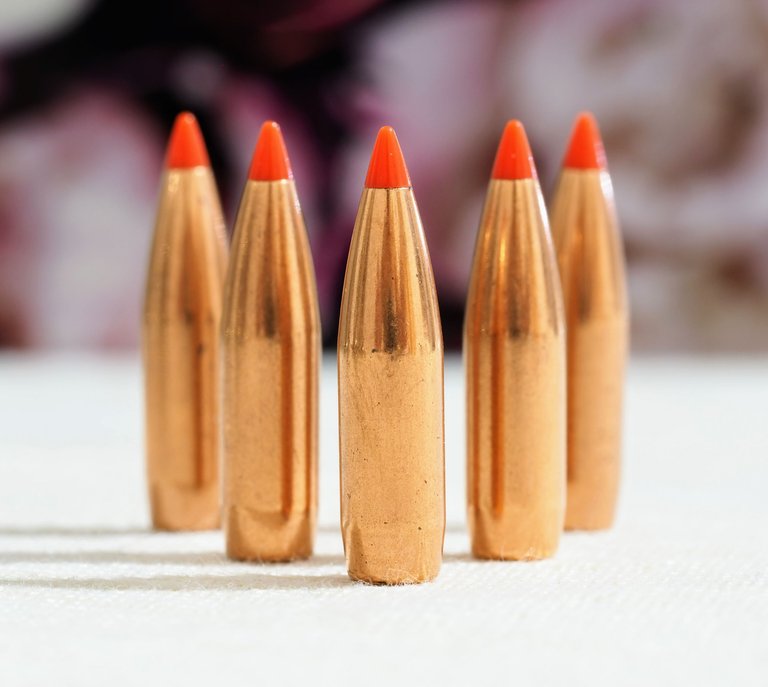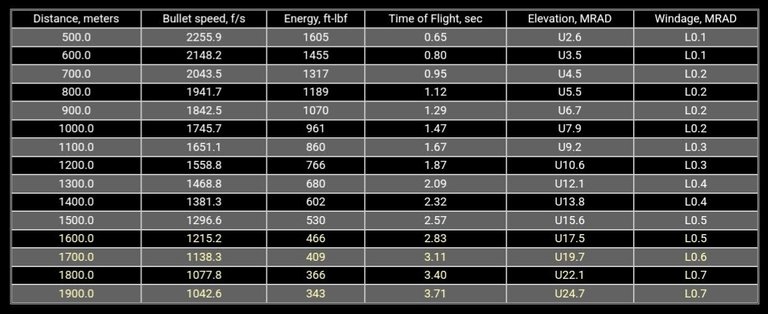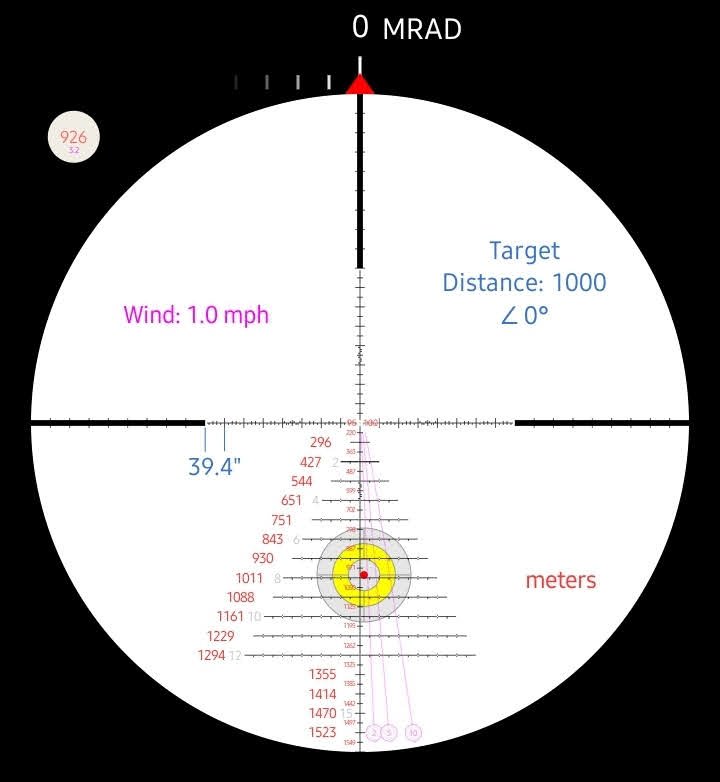Imparted energy
I spent the afternoon at the range yesterday, an enjoyable day of running and gunning in competition with my semi-auto handgun; it was super-cold and I'm still getting over the after effects of covid-19 so that's my excuse for ending up just outside the top ten and I'm sticking to it. The real reason is I didn't shoot well enough, but with fifty or so shooters I was happy where I ended up. I had some fun and that's what matter right?
I had a really great conversation about projectiles and energy with a chap I met on the day, a new member at the range. It's a military-run range, this chap is ex-Navy, which I didn't hold against him, so there's always some interesting (and often unrepeatable) conversation however, rather than military stuff, this fellow and I were talking about hunting. He was interested to hear I cull professionally on a cattle farm and we ended up having a long chat about choosing the right calibre and projectile for the job at hand.

There's thousands of calibre, projectile, case, powder and primer combinations and each has a specific use. Some shooters prefer one over another, it's a personal choice, other combinations are multi-use, and others are fundamentally correct for their particular use, and nothing else. It's a complicated subject and almost every shooter will have an opinion.
I usually don't get into the subject to be honest; I'm one of those shooters who knows what I know about the things I need to know about and tend not to worry too much about the rest; not these days anyway. I'm a long range rifle and handgun shooter and, because I kill things, need to understand what to use. I also make my own ammunition which brings in other elements for consideration and, well, I just can't be bothered with the elements that don't relate directly to me.
I'm a gun guy and know a great deal about all of the various things I need to know, but I'd not go as far as saying I love guns, and I certainly don't talk about them all the time; most who know me in real life don't even know I have guns, or my history of being a shooter, what I've done and where. I keep it that way as I don't feel inclined to open up about it. But I really enjoyed my conversation about projectiles and the imparted energy a bullet transfers to a target in a hunting or culling application today; the bloke was knowledgeable and friendly.

Above is a chart created on my ballistics solver (StrelokPro) which is what I use to determine the shots I take at long range. A lot of information is inserted, calculations are made and a field firing solution results. Further down in the post is the reticle view of the same chart. This is the actual reticle this rifle of mine uses, the SKMR3.
The chart is based on the 6.5mm Creedmoor calibre and is actual data meaning if I was in the field and shooting at 1700 metres, for instance, I'd dial in 19.7 MRAD of elevation and 0.7 MRAD left to account for the wind, aim at the centre of the cross hairs and make the shot. You can see bullet speed in feet/second (fps), energy in foot-pounds (ft-lbs) and time of flight in seconds also. It's the energy I want to mention though.
The energy imparted to the target is, a lot of the time, what actually causes death and so it's important to ensure the right calibre/projectile and powder combination is used. That's why I make my own ammunition - It allows me to develop my own loads which are extremely accurate and predictable with repeatable results. Anyway, I don't want to make this a long post so I'll move on.
See at 500 metres the energy is 1605 ft-lbs? Then at 1600 metres (slightly under one mile) it's only 466 ft-lbs - It's that energy the shooter needs to understand.
You'll also note that at 1600 metres the table goes yellow. That means the projectile is transonic from that point - travelling below the speed of sound - and more easily affected by gravity, weather elements and its own instability. It's actually 1590 meters but I've set the table to 100 metre increments for the purpose of this post.
I wrote a post about supersonic and transonic bullet-flight a while back...You can see that post here if you're keen. Anyway, it's that energy a shooter needs to consider when dispatching targets, especially when he or she is looking to do so humanely. i.e. quickly.
Based on what you see in the chart above I'd not take a shot at an animal at more than 900 metres based on the available energy at that range. In reality, it's probably 600 metres as too much can happen down range when a projectile is in-flight for 1.29 seconds. If the animal moved slightly the shot would miss, or worse, the animal may be clipped, and that isn't humane killing.

There's many factors to understand when considering shooting at distance as mentioned earlier, calibre, projectile, case, primer, powder and load development, seating depth and so on. There's the rifle system to consider, the scope, barrel harmonics and bipod, then the environmental factors like wind, altitude and humidity, Coriolis effect, aerodynamic jump, spin-drift...then shooter-skill.
Included in that list, when shooting to kill, is the energy imparted to the target. Shooting at something with the intention to kill, but using the wrong systems, won't end with the desired result. This is also in the case, as in military situations, when shooting at inanimate objects like aircraft, tanks, buildings, bunkers, entrenched positions, vehicles and so on...An effective shot comes down to the energy imparted at the target.
It's these things and more I spoke about with that guy and, because I do this stuff all the time, found it interesting - He had a very intelligent point of view. Anyway, you're probably bored, if you even made it this far, and that's ok. If you happen to have any questions feel free to ask in the comments below.
Design and create your ideal life, don't live it by default - Tomorrow isn't promised so be humble and kind
All images in this post are my own
ME TOO!!! There was ZERO reading, writing, or arithmetics
Had a nice, long detailed reply, then Ecency crashed but in short, I can see the detail you put into this and it's very similar to my approach to hot-rodding engines
I'm embarking on this journey. I'm behind you, WAY BEHIND, but it's not a race and my journey may end before yours or not? We may end up at different destinations but the trip is still on a lot of the same roads, so be diligent, you have folks watching and learning from your postings, my good sir 👍👍👍
I hate it when I lose awesome comments! Look, let's just say that I think your lost comment was really great and I appreciate the time you spent to reply. 🤪
One of my brother's builds custom cars, show winning ones, so I know what goes into that, and rodding etc. It's the same diligence and effort required for firearms and long range shooting.
I've been doing this for over 30 years and know a lot, much of which I won't say here on Hive, but I like saying a few things that may make people think in new directions.
Thanks for this comment, and the one that was lost, I appreciate it.
I personally don't know much about guns other than point, pull trigger, boom, but I do know there is a lot of craftsmanship and science that goes into them. I also know that when a person really enjoys something, it's fun to have an audience to talk with about it.
I bet it felt good to be back on the range! I had planned to be at the archery range this weekend but, ironically, I was also brought down by Covid, so that'll be next week. I know that'll feel good for me.
I like to talk about the technical nature of shooting and firearms, ballistics and so on, especially with people who don't know it as (sometimes) someone's face lights up and they crave more. It's those people with curiosity and openness that provide the best conversation in this regard as I get to represent firearms properly to someone who doesn't know about them. You know what I mean?
I enjoyed the range, as always, and I hope you get to go this weekend, and that covid-chan hasn't hit you too hard.
Do you often get to talk tech? Sounds like it may have been a good conversation if it triggered a nice long explanatory post :)
I'm always talking about tech stuff where firearms are concerned; there's always more to learn and more to teach. Most people won't understand though, non-shooters, as there's concepts within concepts, I guess similar to what you do.
Congratulations @galenkp! You have completed the following achievement on the Hive blockchain and have been rewarded with new badge(s):
You can view your badges on your board and compare yourself to others in the Ranking
If you no longer want to receive notifications, reply to this comment with the word
STOPSupport the HiveBuzz project. Vote for our proposal!